Giants from behind the horizon
This is part of a new project exploring consumer culture. As the project develops, I plan to look at consumption on the high street and online, the people and machinery that transport these goods to us and what happens when we have finished with them.
My interest in international trade and shipping grew from two commercial commissions that I had at around the same time. The first was for a large marine insurance company where I took a series of images on a brand new Maersk container ship. At the time, in 1998 it was state of the art and the largest ship of its type in the world. By modern standards, the same ship would be a baby compared to the current monsters. Many of today’s ships can carry over 20,000 shipping containers.
In the same year I had a commission in Bangladesh and I had the opportunity to take pictures of the Ship Breakers of Chittagong. On one of the longest beaches in the world, gangs of workers dismantle huge ships often with little more than hand tools and with little understanding of health and safety. These ships had reached the end of their working lives, they contained toxic harmful products and dismantling in The West would be unsafe and uneconomic so this work is ‘shipped out’ to the developing world. I saw numerous workers carrying bales of asbestos from the engine rooms of a ship they were working on.
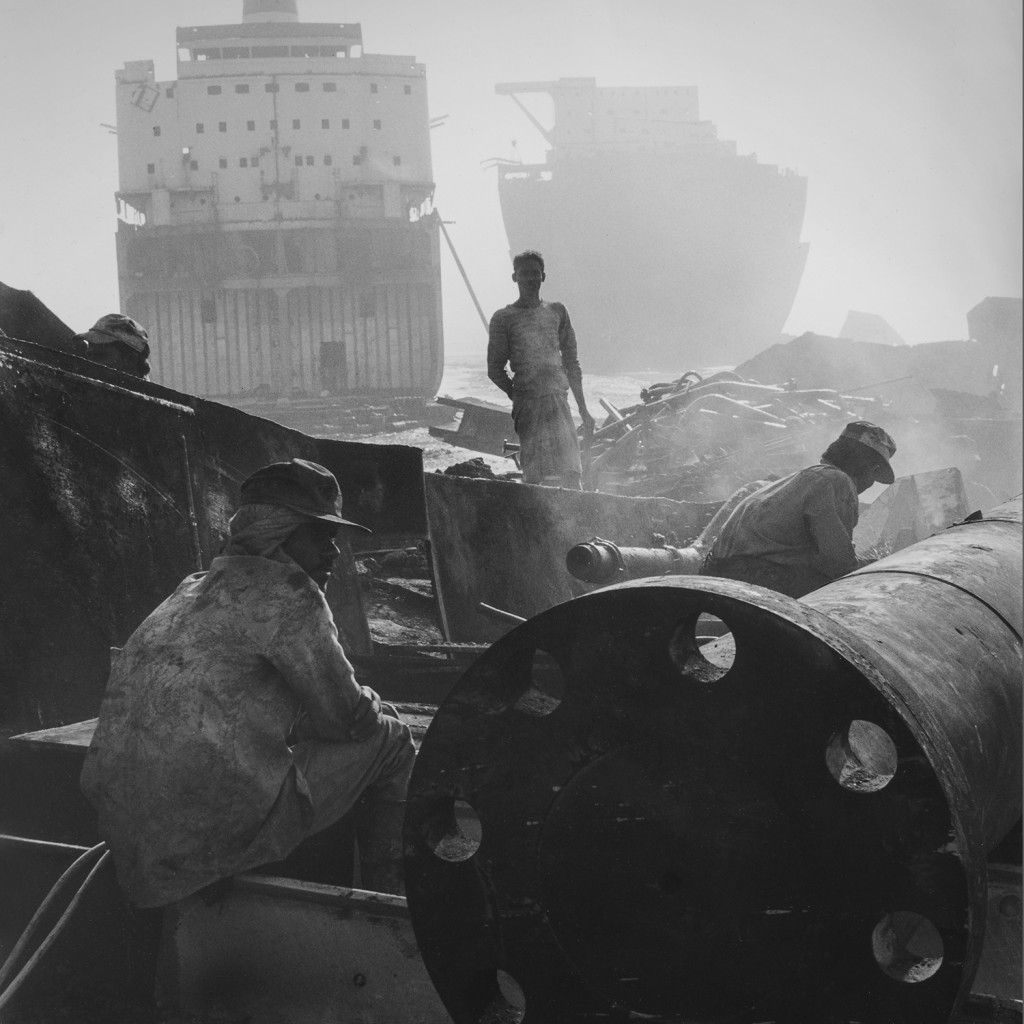
Ship breakers, Chittagong, Bangladesh
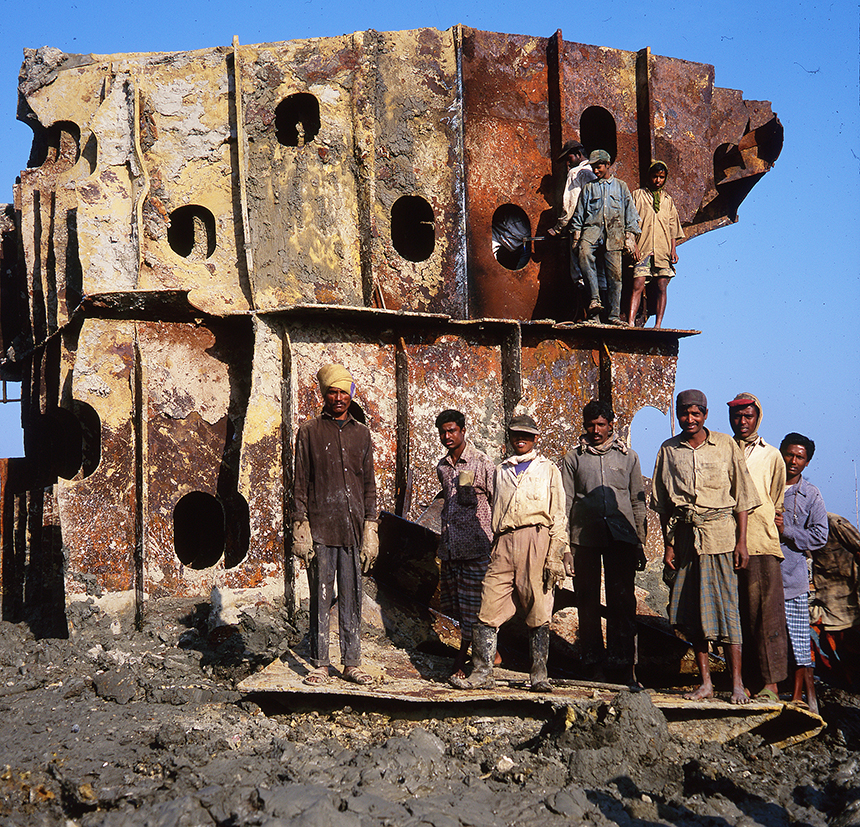
Ship breakers, Bangladesh
As a species, the human race currently consumes 50% more resources than the planet can provide.
Consumer spending (consumption) is often used as a measure of the strength of an economy. Advertising companies assign status to the products they promote and we the consumers acquire this status along with the items we purchase. Today’s must have item is tomorrow’s landfill. Unless we can find a way to increase the life of the products we buy or find a way to recycle them completely, consumer culture in its current form is unsustainable.
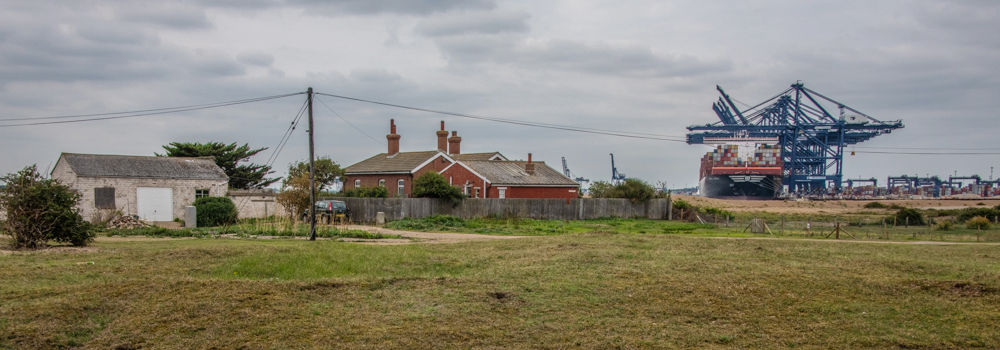
MSC Anna being unloaded at Felixtowe
As a post-industrial state, 90% of what we use is imported. To make this possible, a fleet of giant container ships circle the world.
Some of these ships can transport over 20,000 containers. If all of these containers were loaded onto lorries and parked in a line, the queue would be around 330KM in length, longer than the M4 motorway.
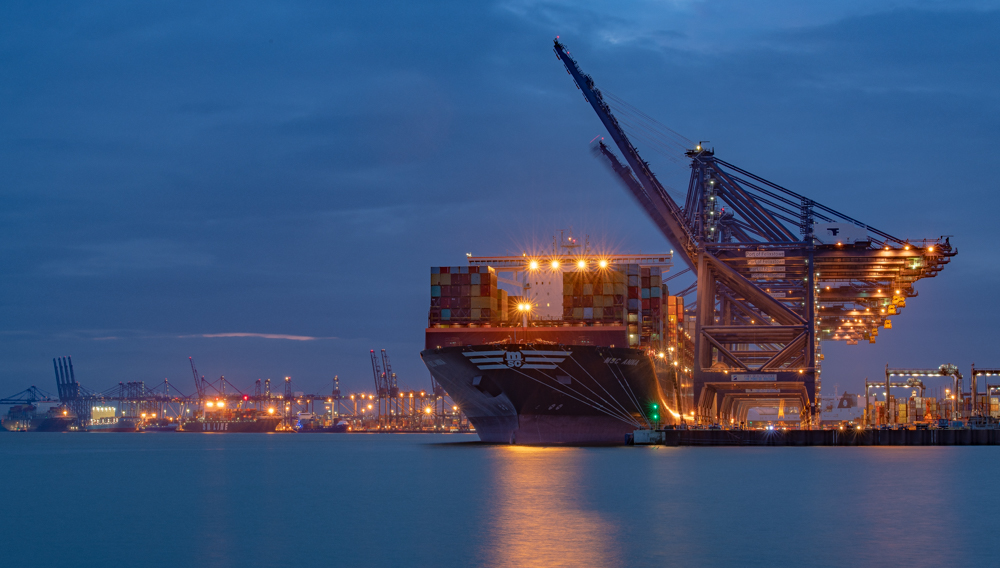
MSC Anna about to set sail, Felixtowe
Occasionally, we might see a distant shadow on the horizon but most of the time these monsters occupy a world out of our sight. This part of the project aims to link the shadows that pass in the distance to our unstoppable appetite for ‘stuff’.
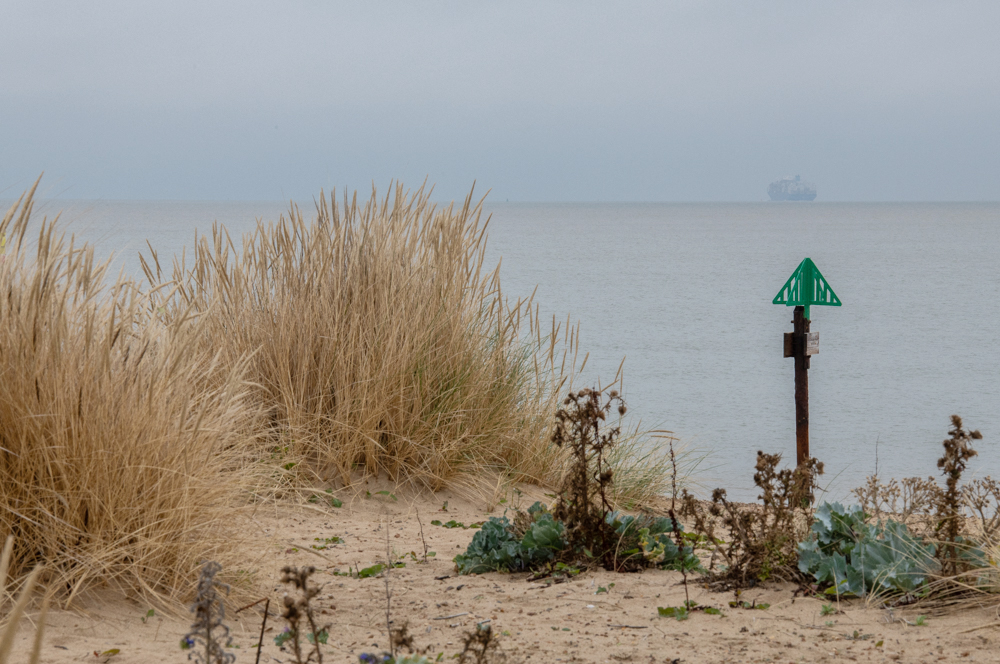
Dali bound for Bremerhaven
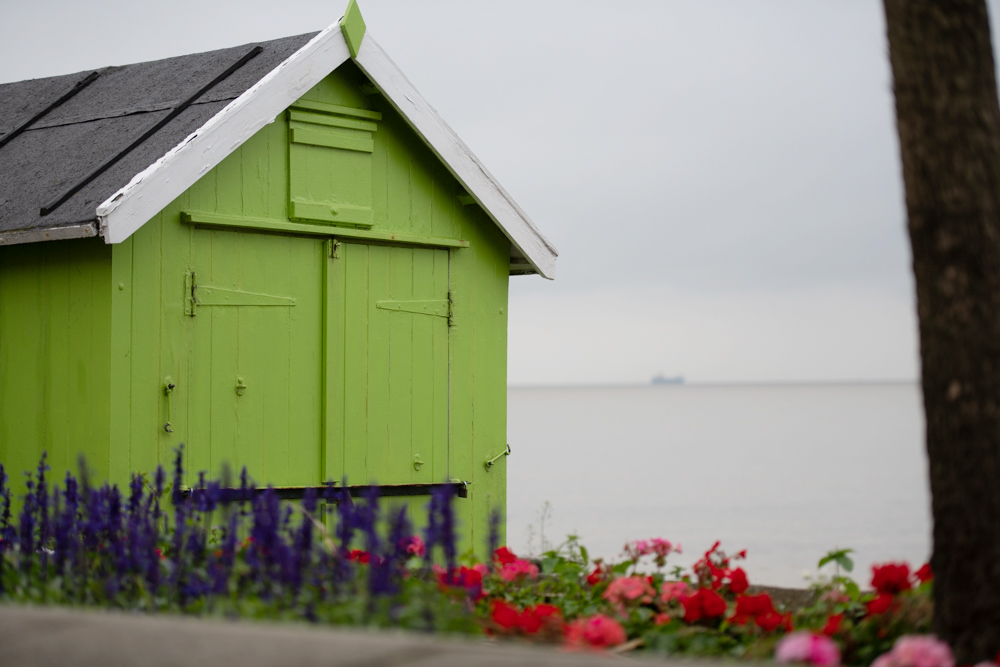
Bore Bay bound for Zeebrugge
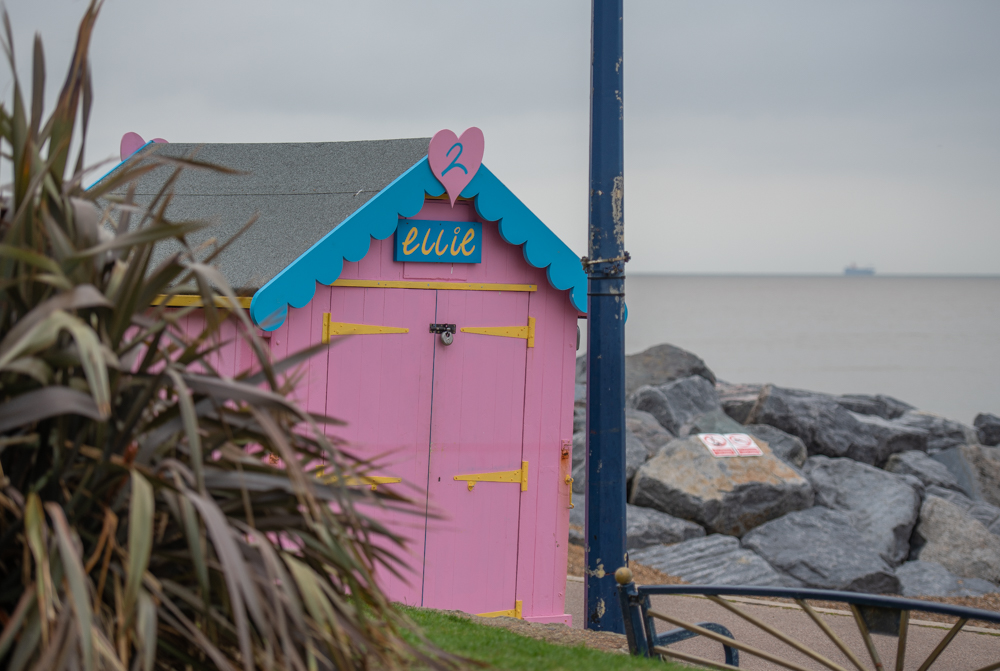
Maersk Mc Kinney Moller bound for Hamburg
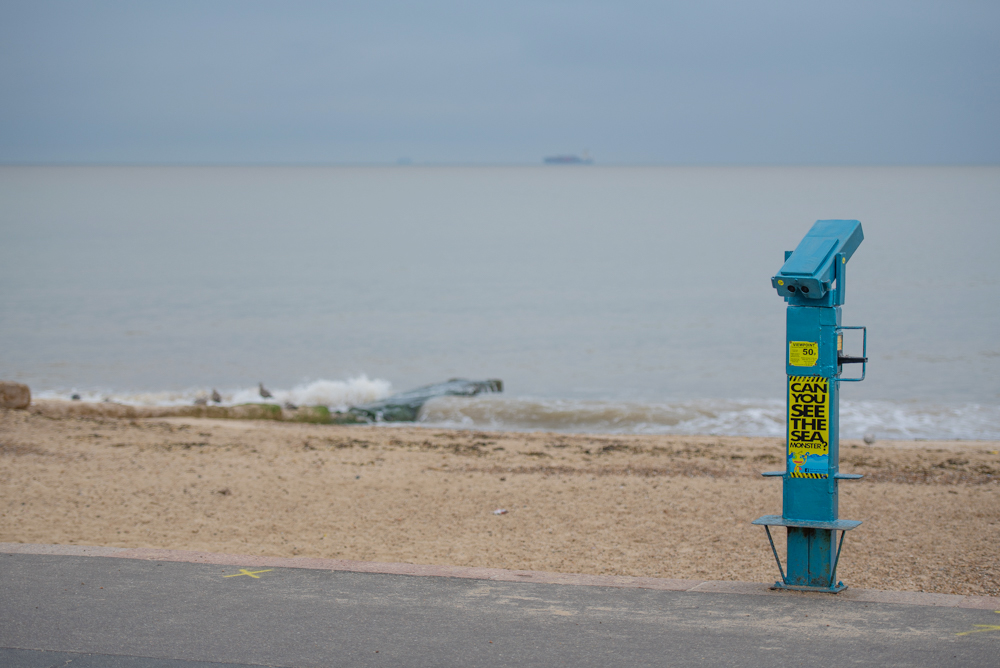
OOCL Scandinavia bound for Port Said
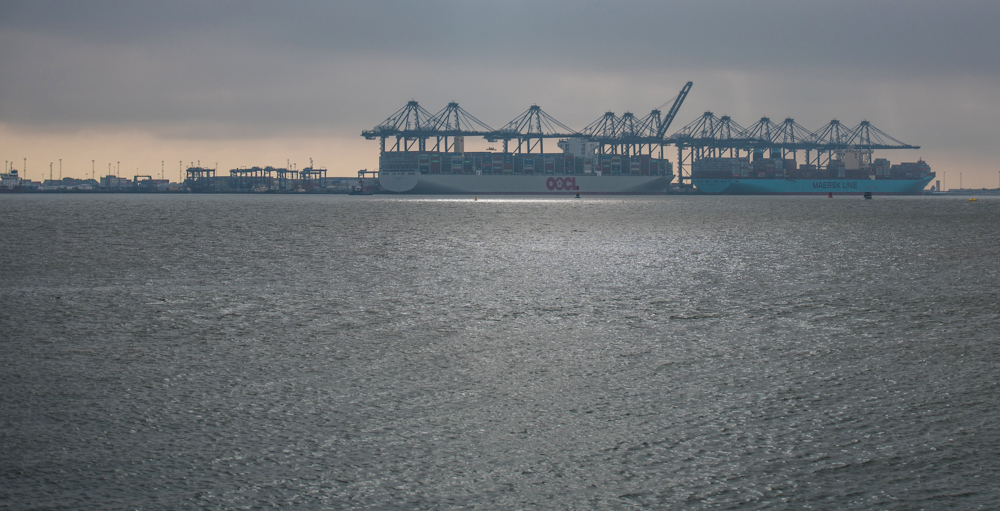
OOCL Scandinavia in port
There are 6 OOCL ships including the Scandinavia which all currently share the title of the largest container ships currently at sea. Each of these ships can carry 21413 containers.
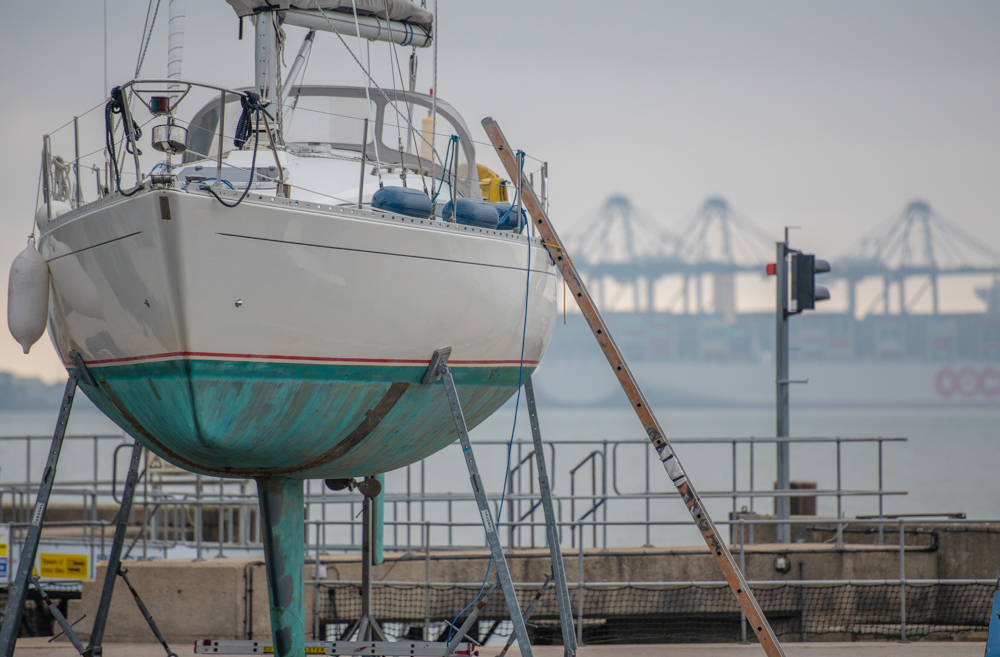
OOCL Scandinavia
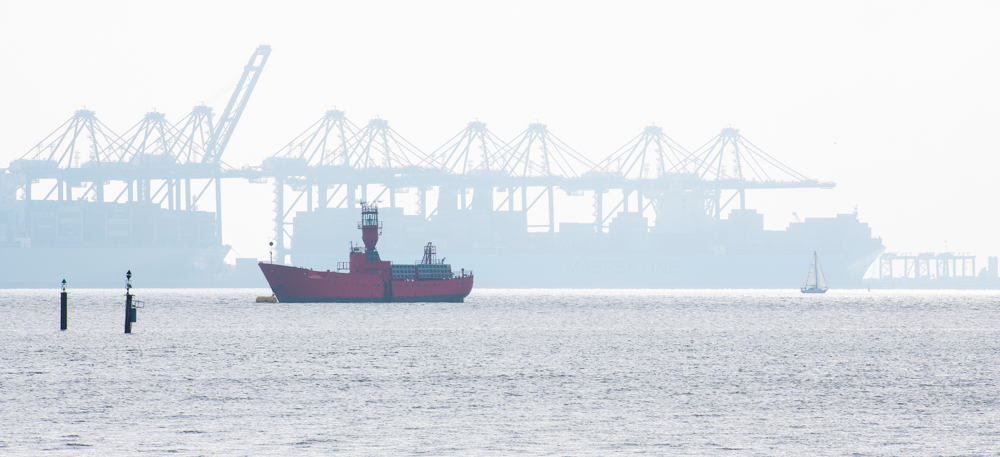
Maersk Mc Kinney Moller in port, Felixtowe
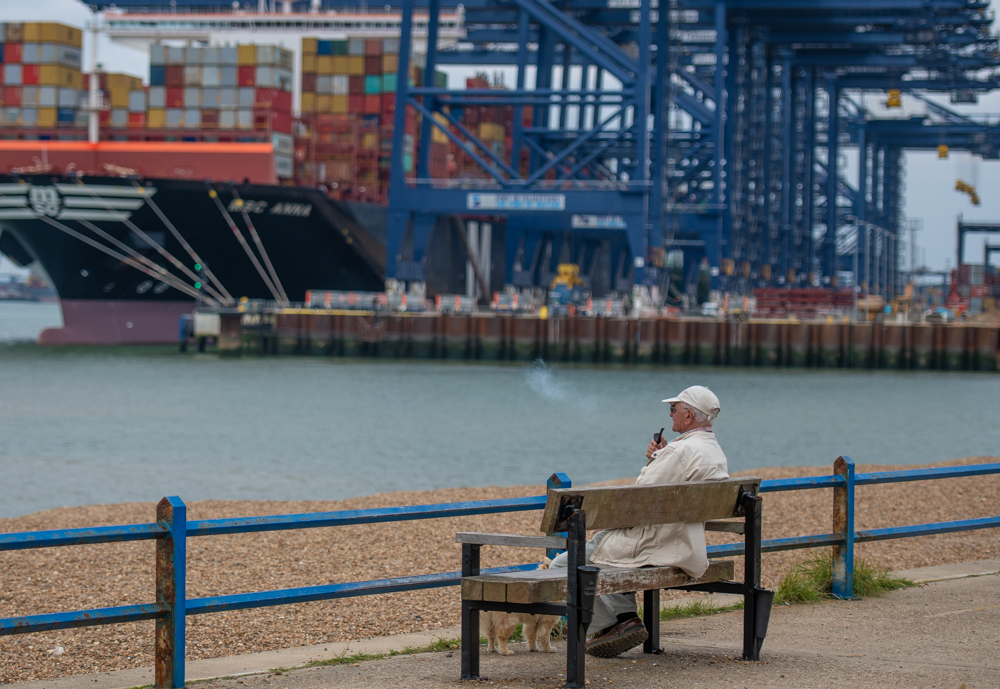
MSV Anna can carry over 19,300 containers
The ships that bring their bounty from where most goods are manufactured in China and South East Asia have little of value to ship back. In the past, our waste products were crammed into containers where they were disposed of in the developing world. The developing world no longer wants our waste and so often containers return empty or don’t return at all. They serve a new life as glamping pods, pop-up coffee shops, stables or site offices.
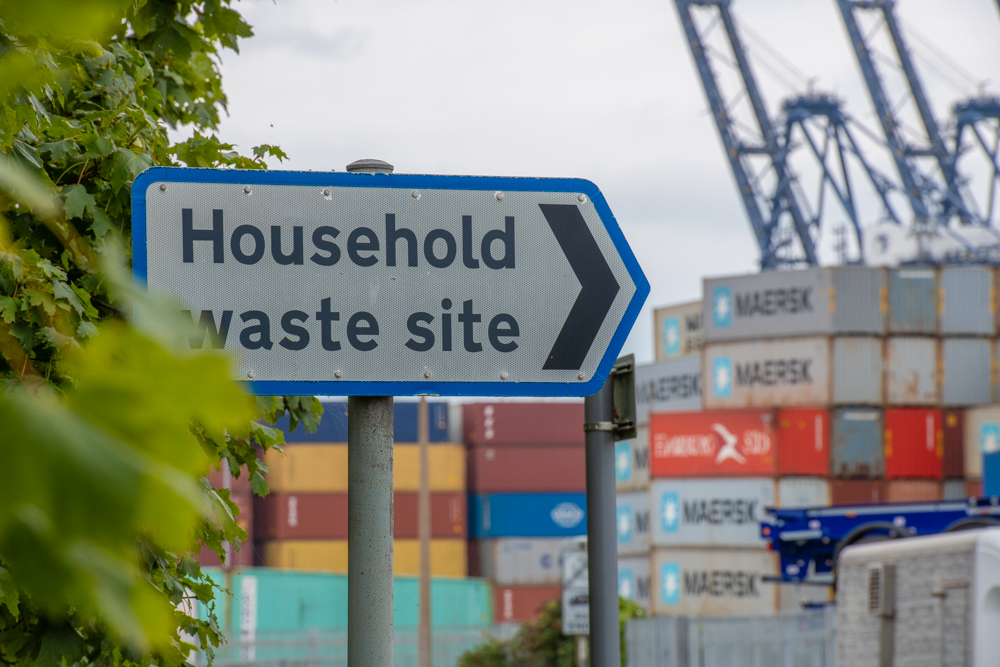
Refuse centre next to container port
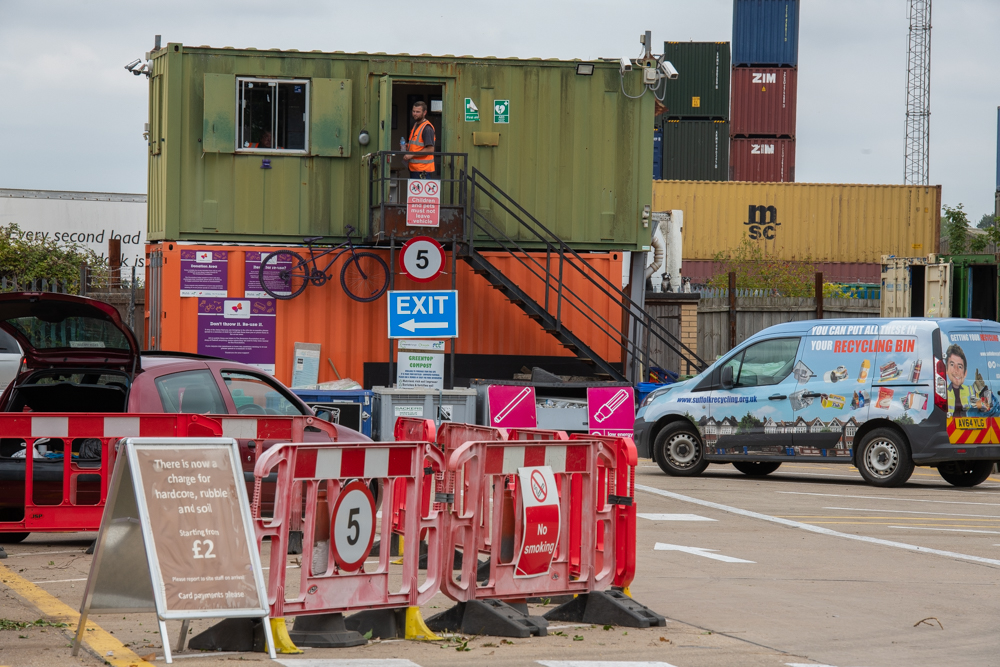
‘Recycling Centre’ next to container port (the site office is an recycled container)
As ‘good’ consumers, we need to continually buy new items and obey the advertisers who tell us that we will be better, be more popular, have greater status and be more attractive if we buy the latest gadget. Often goods fail shortly after the warranty expires, repair is expensive and difficult, replacement is cheap and easy. The failed item is discarded and often finds its way into landfill. Despite major developments in material science (lightbulbs that can last a lifetime) we have learnt to accept that items will fail and need replacing.
2 month old faulty picture frame showing MV Autosun passing boating lake at Portishead with a cargo of up to 2000 cars from Bilbao to Portbury
